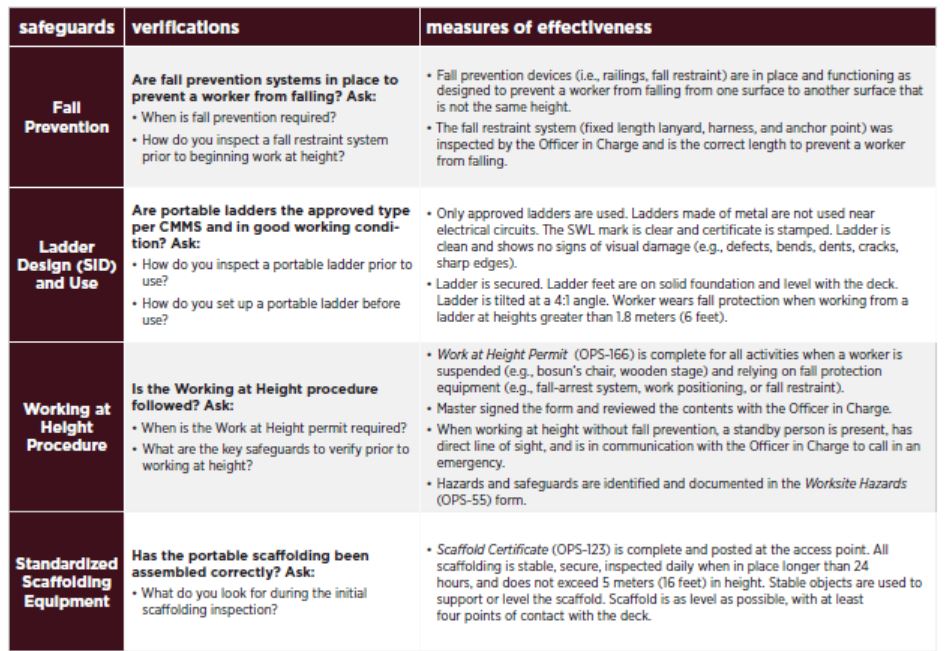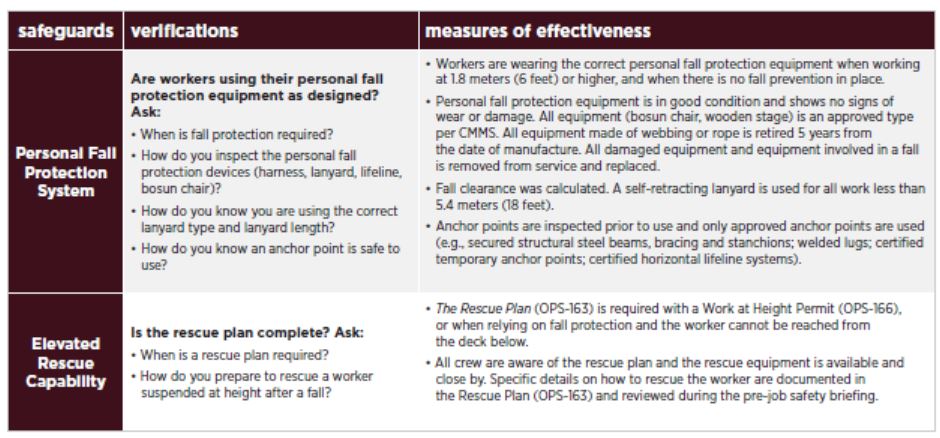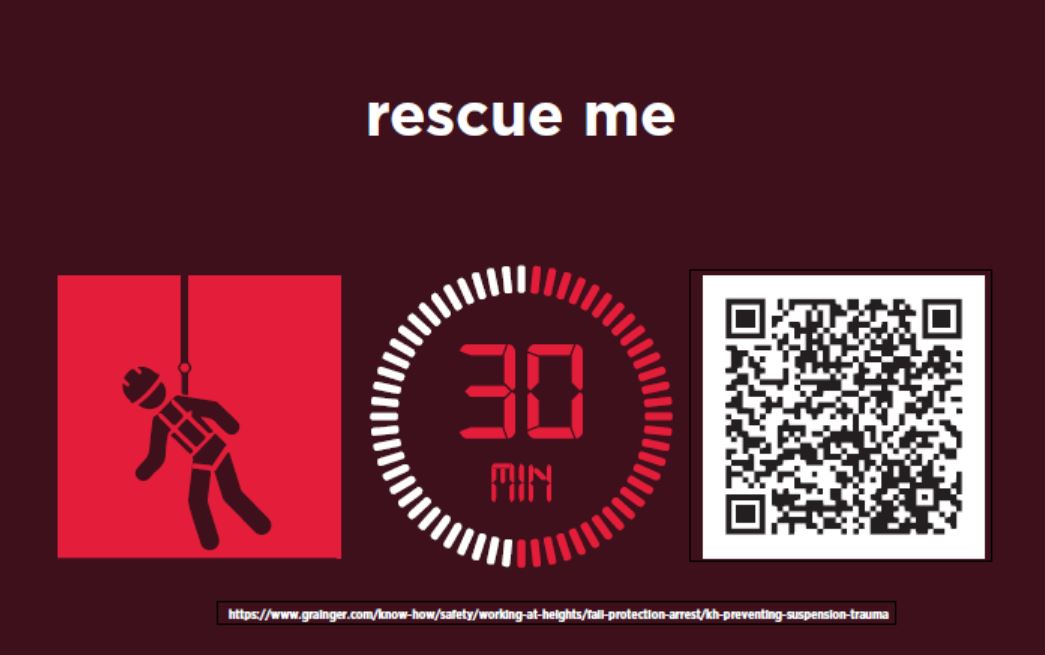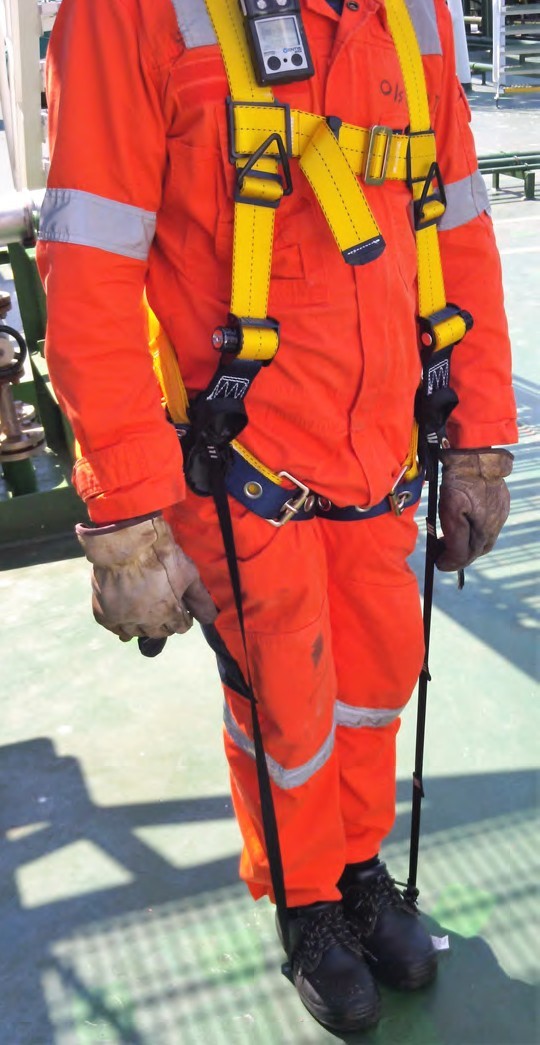In recently received Chevron's Safety Bulletin 20-10 two articles addressing best practices for Work at Heights and Rescue from Heights have attracted our attention and led us in relevant revisions to FIM Ch. B-03, Permit to work aloft form and update of the relevant Generic Risk Assessment libary for said operation/activity.
Extract of the said hevron's Safety Bulletin 20-10 is presented below:
Working at Height
For the month of November, Vessel Managment Teams (VMT) verifications will be focused on Working at Height.
If safeguards fail when a worker is working from heights, the potential for a serious injury or fatality is high. It’s important that our VMT Verifications are assuring that our critical safeguards (the hardware and human actions) are in place and effective. Remember that just having the safeguard in place doesn’t mean it’s going to effective.
You should ask the question: how can this safeguard fail or be ineffective, what are its vulnerabilities, and is it free from those vulnerabilities?
For example, gear to perform a worker rescue from height may be available on board, but if the rescue gear is not readily available, if the rope/pulley system is not properly rigged, or if it’s not used correctly by trained seafarers, it will be ineffective as rescue equipment.
The following are some of the critical safeguards for Working at Height. For each safeguard there are examples of what activities should be observed and measures of effectiveness for that safeguard.



Rescue from Height
Working at height is a high risk task. Fall protection prevents injury or death from falling to the level below. But being suspended in fall protection for too long can also be fatal.
This means a quick rescue from height is critical. The Rescue Hauler and rescue hook/pole together allow you to rescue a person suspended at height.
The Rescue Hauler (part of the Skedco 4:1 Rescue Kit) is a double pulley and 100 foot (31 meter) rope system used to rescue a person suspended at height after a fall. The Rollgliss Rescue Pole has a hook that attaches a lifeline to a suspended person when they can’t do it themselves.
Below is information on inspecting and rigging the Rescue Hauler, preventing and responding to suspension trauma, and preparing for a rescue from height.
suspension trauma
Suspension trauma can be fatal. It’s caused by a buildup of blood in the legs while suspended in a harness; this blocks oxygen from getting to the brain and other organs. The risk of death from suspension trauma greatly increases after 30 minutes, so a suspended person must be rescued as quickly as possible.
Early symptoms of suspension trauma (within 20 minutes) are sweating, shortness of breath, nausea and numbness in the legs.
If you’re suspended in a harness, sit back in the harness to reduce pressure on your legs, keep your legs moving, and pull your knees up to your chest, if you can.
After rescuing a person that was suspended in a harness, NEVER lay the person flat on the ground, or stand them upright, because the release of pooled blood from the legs could over-strain the heart (and other organs) and cause death.
Instead, place the rescued person in a “W” position, sitting upright on the ground with legs bent so that their knees line up with the bottom of their chin. Keep their feet flat on the ground.

They should remain in this position for at least 30 minutes and even longer if symptoms are slow to subside. The “W” position slows the flow of the pooled blood back into the body.
Empire's adopted above best practices as follows:
-
FIM Ch. B-03, par 3.1 PPE Matrix was revised to include additional wording to column regarding Safety Line. Para 3.2.1 was also revised on equipment life span and in para 3.2.2.1 additional mitigation measures were included
-
VS-12 Permit to work aloft form was revised to include fall arrestor/trauma relief straps so as to be in line with revised FIM Ch.B-03 Safe Working practices
-
Generic Risk Assessment libary have been updated for the "Work Aloft" and "Work over the side" with relevant hazards and control measures.
- Two sets of full body Safety harness, with Fall arrestor and Trauma relief straps have been ordered to be provided to all managed fleet. You will be furtehr notified when distribution begins.
Source: HSQE Dept
